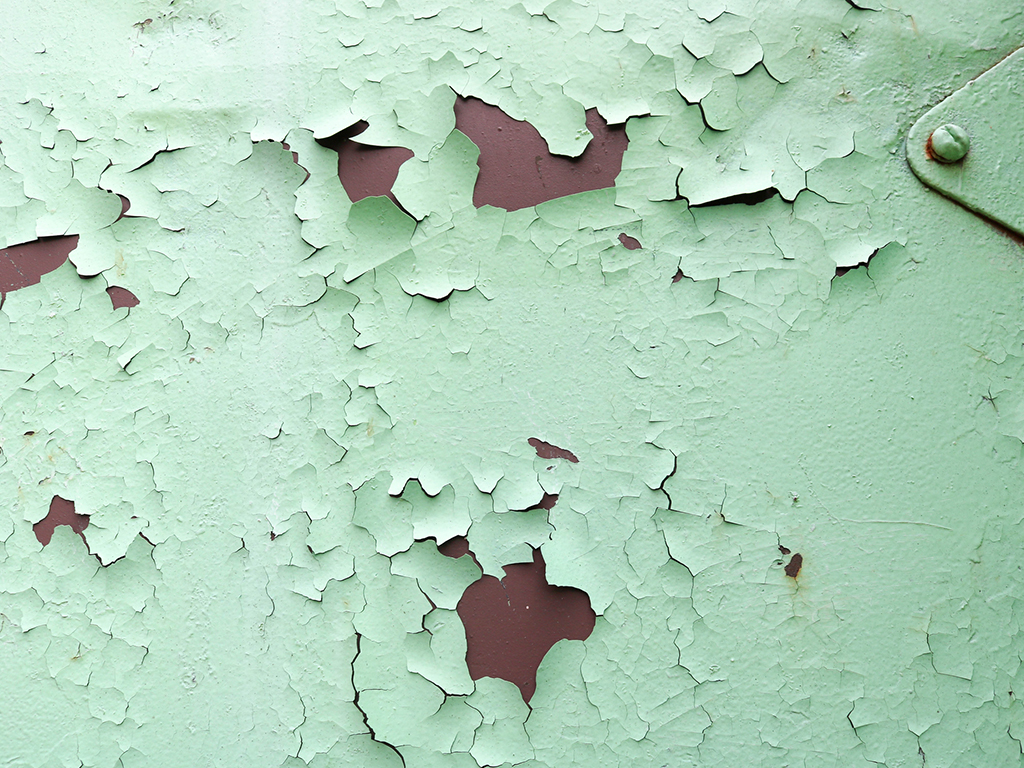Your throat is sore, you are tired all the time, and you have a lingering cough that won’t go away. You’ve been tested for flu, COVID-19, and strep throat, and the results come back negative. Yet it doesn’t feel like a cold either. Perhaps, then, it's your indoor air quality (IAQ).
Indoor air is subject to contaminants that may cause symptoms ranging from sniffles to more serious (and sometimes fatal) results. Wouldn’t it be nice to know what you are breathing in?
Fortunately, it is possible to test for types of contaminants in your space. Let’s begin by discussing what contaminants can be in your air, and when to test for them. At the end of the article, we’ll explore different testing methods you may use.
Please note that we are air quality experts, not doctors or lawyers. Nothing in this article may be construed as medical or legal advice. Our goal at ActivePure is to raise awareness of the importance of air quality and encourage you to improve your IAQ with the methods that work best for the needs of your home, school, facility, or business.
Types of contaminants & when to test
For the purposes of this article, we split indoor air pollution into five broad, unofficial categories:
- Combustion gases
- Volatile organic compounds
- Biological contaminants
- Particulate matter
- Miscellaneous contaminants
Combustion gases
 Gas stoves release many contaminants, including combustion gases. Combustion
gases are exactly what they sound like: gases associated with the
combustion of fuel. Carbon dioxide, carbon monoxide, and nitrogen dioxide
are three important examples.
Gas stoves release many contaminants, including combustion gases. Combustion
gases are exactly what they sound like: gases associated with the
combustion of fuel. Carbon dioxide, carbon monoxide, and nitrogen dioxide
are three important examples.
Carbon dioxide:
Carbon dioxide is an odorless, colorless gas with the formula CO2.
- Source: Your own lungs pump carbon dioxide into the air constantly. CO2 may also be produced by any source of combustion, such as a heater or stove. Since CO2 is the fourth most common gas in the atmosphere, this usually isn’t much of a concern. However, modern buildings are often built to be as airtight as possible for energy efficiency. This can spike carbon dioxide to undesirable levels.
- Standards: According to the Wisconsin Department of Health, negative effects of carbon dioxide can be perceived in concentrations above 1,000 ppm (parts per million). The normal level for outdoor air is 400 ppm.
- Indications of high carbon dioxide: The main indication of high carbon dioxide is drowsiness, (but come on, when are you *not* tired; life is busy). One recent study demonstrated that concentrations of 1,000 ppm can also impair people’s ability to perform cognitive tasks. At 2,000 to 5,000 ppm people may also experience headaches, increased heart rate, and nausea.
- When to test: If you are in an old, drafty building, you can be fairly certain that the indoor and outdoor air are circulating sufficiently to prevent CO2 buildup. However, modern buildings (unless they have an Energy or Heat Recovery Ventilator built into the HVAC system) might bear testing, especially if you are experiencing symptoms.
Carbon monoxide:
Carbon monoxide is carbon dioxide’s evil twin, with a chemical formula of CO.
- Source: Carbon monoxide can be produced by any sort of combustion. It can reach dangerous levels when a heating system or stove is either installed improperly, is venting improperly, or is damaged. CO can also accumulate when attempting to do something foolish, such as trying to operate a grill or a portable generator indoors.
- Standards: Normal levels (in houses with gas stoves) range from 0.5 to five ppm. OSHA standards limit carbon monoxide to 35 ppm over a 10-hour shift for workers. People with heart problems may experience chest pains if CO levels are between 1.0 and 70 ppm. If you don’t have heart problems, symptoms generally won’t appear until the concentration reaches above 70 ppm. Levels above 150 ppm may be fatal for healthy adults.
- Indications of high carbon monoxide: Death. Before you die though, you may experience blurred vision, nausea, headaches, dizziness, confusion, and loss of consciousness. By the time carbon monoxide poisoning becomes obvious, you may be too drowsy and/or confused to vacate the area. It should be noted that carbon monoxide is also especially dangerous for children in utero.
- When to test: Always. Carbon monoxide is the sort of contaminant which requires 24/7 monitoring; (see the section titled ‘Household monitors’ below). It would also be wise to have your fuel-burning appliances inspected annually.
Nitrogen dioxide:
Nitrogen is the most common gas in the earth's atmosphere, and is relatively harmless. When combustion occurs, however, it can react with oxygen to form a family of gases known as nitrous oxides. We are most concerned with nitrogen dioxide (NO2), which is a reddish-brown gas with an acrid smell.
- Source: NO2 can form due to any type of combustion, especially gas or kerosene stoves and heaters.
- Standards: The World Health Organization recommends keeping indoor Nitrogen Dioxide levels at five parts per billion (ppb). Cooking with a gas stove can generate levels many times this in a poorly ventilated kitchen.
- Indications of nitrogen dioxide: Nitrogen dioxide can inflame airways, reduce lung function, and trigger asthma attacks. It might also worsen coughs and increase your risk of an emergency room visit. There are some indications that it might even cause asthma in young children.
- When to test: If you are a parent with young children or are an adult with lung ailments, it might be wise to test your nitrogen dioxide levels, assuming you have a gas stove or combustion-based space heater.
Volatile organic compounds (VOCs)
 Rugs and new furniture may off-gas VOCs.
Rugs and new furniture may off-gas VOCs.
Volatile organic compounds are water-soluble and carbon-based. They are exuded as gases by everything from carpets to chemical cleaners. One common VOC is formaldehyde, although there are many others.
Formaldehyde:
Formaldehyde is a pungent, colorless gas with the formula CH2O. It is also a carcinogen.
- Source: The main source of formaldehyde in homes is pressed wood. Other sources can include dry-cleaned clothes, certain hair treatments, tobacco smoke, and combustion.
- Standards: Average levels are 0.1 ppm in the home but can range up to 0.3 ppm. OSHA standards indicate a limit of 0.75 ppm for workers in an 8-hour shift.
- Indications of high formaldehyde: Indications of high formaldehyde can include watery eyes, coughing, wheezing, nausea, and skin irritation. Formaldehyde may also cause burning sensations in the eyes, nose, and throat.
- When to test: Formaldehyde degrades quickly, but it might be worth testing in newer homes with a significant amount of pressed wood products. It also should be tested in workplaces that produce a high level of VOCs, such as dry cleaners, salons, or factories.
Particulate matter:
Particulate matter is “a mixture of solid particles and liquid droplets found in the air.” Particulate matter is classified by size, so PM10 refers to particles of roughly 10 microns or smaller, PM2.5 refers to particles 2.5 microns or smaller, etc. In general, the smaller the particulate matter, the deeper it can penetrate the lungs and the more dangerous it is.
- Source: Everything from pet dander to pollen, tobacco smoke to smokestacks, bacon to beach sand contributes to particulate matter. Many causes of air pollution such as forest fires and factories are also sources of particulate matter.
- Standards: There are no indoor standards for particulate matter. The current ambient standard for outdoor PM2.5 is 12.0 micrograms per cubic meter (µg/m3) as an annual average. The outdoor standard in any 24-hour period is 35 µg/m3.
- Indications of high particulate matter: Long-term exposure to particulate matter can be dangerous even when there aren’t any obvious immediate effects. Per the EPA, prolonged exposure to particulate matter can cause “premature death in people with lung and heart disease, nonfatal heart attacks, irregular heartbeat, and decreased lung function over time.” More immediately, it can “aggravate asthma, irritate airways, and cause coughs or difficulty breathing”.
- When to test: Outdoor particulate matter is easy to test for any time you like; just check the air quality report in your area. Because indoor sources (such as a stove) can spike levels even higher than the outdoor level, it’s wise for everyone to monitor this contaminant indoors to see if action needs to be taken.
Biological contaminants
Biological contaminants include fungi (mold), bacteria, and viruses.
Fungi (mold & mildew):
Fungal spores exist everywhere you look, and it is neither practical nor desirable to eliminate them entirely. However, aside from the yeast in your sourdough starter, you generally don’t want to encourage fungal growth indoors. Undesirable indoor fungal growth is usually called mold or mildew. Informally, these terms are applied interchangeably. Officially, though, mildew is a type of mold, so we will be referring simply to “mold” for the rest of this article.
- Source: Wherever there is sufficient moisture indoors, fungal spores can stick to surfaces and begin to multiply. Most molds also prefer warm, dark places. For these reasons, bathrooms and basements are of particular concern.
- Standards: Per the EPA, “Currently, there are no EPA regulations or standards for airborne mold contaminants.”
- Indications of mold: Mold exposure can produce allergy-like symptoms such as sore throat or skin rashes. Despite fear-mongering over the dreaded “toxic mold syndrome”, there is no evidence of so-called “black mold” producing memory loss, headaches, fatigue, or infantile pulmonary hemorrhage. Mold exposure is, however, associated with asthma in school-age children. Certain molds may also infect the lungs of the immunocompromised.
Sources: Bacteria are nigh-omnipresent, microscopic organisms. Most bacteria are either beneficial or harmless. It’s impossible to get rid of all bacteria, nor should you try. The goal is to prevent the development of infectious pockets of harmful bacteria, such as legionella or tuberculosis.
Viruses are packets of DNA or RNA encased in a protein shell. They take over other cells and force these cells to produce more viruses. Viruses are shed by any living things infected with that same virus, (i.e., they are shed by infected humans or animals). In this section we are concerned with viruses which can infect humans through exhaled aerosol droplets, such as influenza A and SARS-CoV-2.
- Indications of high bacteria or virus count: Unless you are already sick, it's hard to tell without testing. However, as bacteria and viruses may travel inside particulate matter, particulate matter may be an indirect indication of unhealthy air pathogen levels.
Standards & when to test: Most field testing does not measure the concentration of a particular bacterial or viral pathogen. Instead, it merely indicates if a particular variety of pathogen is present. For this reason, the main air quality “test” recommended by the EPA for biological contaminants is to inspect general sanitary conditions in the building.
If you are concerned about viruses and bacteria in your home, (either because you have frequent guests or you are immunocompromised) we recommend researching active air purifiers.
We believe businesses, schools, and hospitals will still wish to test viruses and bacteria as part of testing their general air quality and ventilation effectiveness. They also may want to test their pathogen levels on surfaces, especially where food is prepared.
Viruses and Bacteria:
Other miscellaneous contaminants
 Damaged, flaking paint is the main source of lead dust.
Damaged, flaking paint is the main source of lead dust.
Lead dust:
- Source: Lead dust generally comes from scraping, peeling, or damaged lead paint. While lead paint is no longer used in the U.S., it can still be found in older buildings.
- Standards: Per the EPA “new clearance levels are 10 micrograms (µg) of lead in dust per square foot (ft2) for floor dust and 100 µg/ft2 for window sill dust.” You’ll notice neither of these are airborne levels. This is because lead dust mainly enters the air from activity around damaged lead paint. All lead testing methods we are aware of are for surfaces, not air.
- Indications of lead poisoning: It generally takes a long time for lead to build up to the point that poisoning is noticeable in adults. According to the Mayo Clinic, symptoms can include high blood pressure, joint and muscle pain, memory and concentration problems, headache, abdominal pain, mood disorders, and reduced sperm count. It may also cause “ [m]iscarriage, stillbirth or premature birth in pregnant women.” Per the EPA, “Lead exposure in children can result in delays in physical development, lower IQ levels, shorter attention spans, and an increase in behavioral problems.”
- When to test: When you live in a building constructed before 1978 AND a) there is peeling paint, b) you have children, OR c) you are about to do repairs, construction, or renovation, you should test for lead on the relevant surfaces.
Radon:
Radon is an odorless, colorless, radioactive noble gas.
- Source: Radon is generated from the decay of radioactive elements in rocks or soil.
- Standards: The EPA recommends that “homes be fixed if the radon level is 4 [picocuries per liter (pCi/L)] or more. Because there is no known safe level of exposure to radon, the EPA also recommends that Americans consider fixing their home for radon levels between 2 pCi/L and 4 pCi/L.”
- Indications of high radon: The main indication of high radon is lung cancer. We don’t recommend waiting for this indication.
- When to test: The EPA recommends testing all homes below the third floor every two years. If high radon levels are found, testing should occur again after mitigation to make sure the problem is fixed.
Asbestos:
Asbestos is a term used for any one of six fibrous, heat-resistant minerals. Because these minerals are so versatile, they were once used in everything from paper to paint to tiles to insulation. Asbestos materials are not technically banned in the U.S., but they are highly regulated.
- Source: Since asbestos is naturally occurring in the ground, we all breathe in a small amount of asbestos each year. However, excessive asbestos exposure can occur when materials made with asbestos are damaged (such as during construction or renovation). With sufficient asbestos exposure, a person may develop specific cancers such as mesothelioma or other fatal lung issues.
- Standards: OSHA’s permissible exposure limit for asbestos is “0.1 fiber per cubic centimeter of air as an eight-hour time-weighted average.”
- Indications of asbestos: Like radon, by the time you have a physical indication of excessive asbestos exposure, it's already too late.
- When to test: Materials in old buildings should be tested for asbestos before renovation or construction. You will also want to test damaged building materials (such as decaying pipe insulation) before attempting repairs. Air tests for asbestos are only required after an asbestos abatement. You might also wish to test asbestos if you live near a naturally occurring asbestos deposit.
How to measure internal air quality (IAQ)
 Some forms of air quality testing rely on laboratory analysis.
Some forms of air quality testing rely on laboratory analysis.
Now that we know different types of contaminants and when to test for them, let’s discuss how to test for them. There are seven methods of IAQ testing. Note: For this section, we are especially indebted to the EPA’s “Common IAQ Measurements - A General Guide”.
The ‘smell test’
No single test checks for every possible pollutant. Before you invest in professional testing, you’ll want a general idea of what you are testing for.
The easiest way to get this general idea is to use all your senses (including your common sense). If you are sniffling and sneezing, it's likely you have some type of allergen. If you see peeling paint, you might have lead dust. If you smell mold, you probably have mold. Of course, many contaminants, including some of the most dangerous ones, are not immediately identifiable. Many symptoms, such as lethargy or a cough, may be caused by a variety of contaminants. For this reason, you’ll also want to use one of the more targeted methods of testing below. However, your senses and your symptoms can provide you with a strong starting point.
Advantages of the ‘smell test’
- This method costs you nothing but time. H4Disadvantages of the ‘smell test’
- This method is highly subjective and thus potentially inaccurate.
Indirect testing: air flow, temperature & humidity
Some of the most important testing doesn’t look for contaminants at all, but judges whether contaminants might be building up. Because modern buildings are built to be airtight, well-designed and well-maintained ventilation systems are essential for healthy indoor air quality.
Temperature and humidity analysis may be used to determine the efficacy and functionality of your current HVAC system. Meanwhile, a smoke (or fog) generator, which releases puffs of chemical smoke, may be used to map airflow movements and ventilation in a space. A pitot tube or anemometer can measure air velocity to help determine air exchange rate. Taken together, these methods can indicate if a building’s ventilation is encouraging or preventing healthy indoor air quality.
Advantages of indirect testing
- Reveals ventilation/HVAC problems which could contribute to poor IAQ. H4Disadvantages of indirect testing
- Indirect testing doesn’t reveal specific contaminants.
Targeted testing kits
Some contaminants may be tested with one-use home air quality test kits. These fall into two categories: DIY or lab analysis.
DIY kits usually contain various materials and reagents designed to show you the presence of a specific contaminant. For instance, lead may be tested for with a color-changing pen filled with two reactive chemicals. Mold test kits might contain a petri dish with a dextrose (sugar) solution; this is designed to grow mold rapidly if spores are present. One dust mite kit attaches to your vacuum, and shows pregnancy-test-esque lines at the presence of dust mite allergens. (Please note that ActivePure has not vetted any of these products and therefore can neither endorse nor condemn them.)
Laboratory analysis kits allow you to collect the sample, though that sample must be sent to a lab for analysis. ActivePure’s partner Allergy Buyers Club carries an entire range of such home test kits for contaminants of every possible kind—from fungi to formaldehyde to fiberglass, and everything in between.
Advantages of targeted testing kits
- For DIY kits, you are provided with near-instant results. For lab-based kits, you have the advantage of a professional option without needing to schedule an appointment.
Disadvantages of targeted testing kits
- Most targeted kits only test for one type of contaminant.
- Contaminants can ebb and flow in a space based on cooking, painting, construction, people in the room, weather, and ventilation. Sample kits only capture one moment in time. That is, they only tell you what the contaminants' presence was like at the time you tested.
- Targeted testing kits are single use, meaning you only get one shot per testing material. Because you are performing the test yourself, there is plenty of room to make an error. (Some kits include extra supplies partially for this reason.)
Broad-spectrum sampling
 A lab technician analyzes samples under a microscope.
A lab technician analyzes samples under a microscope.
It's often best to have an idea of what contaminant you are testing for ahead of time. However, if you are looking to take a general sample of your air quality, here are two popular options.
One method is the detector tube kit, which collects an air sample in a sealed tube; (before reading this article, we bet you never imagined a scenario where you would have to literally mail air).
Another popular method of lab-based analysis is the vacuum pump. Per the EPA, a vacuum pump “draws air through collection devices, such as a filter (catches airborne particles), a sorbent tube (which attracts certain chemical vapors to a powder such as carbon), or an impinger (bubbles the contaminants through solution in a test tube).” One of the most common types of filters is known as the sampling cassette.
If you grew up in the ‘90s, allow us to clear away any confusion. These cassettes have nothing to do with ribbon tapes untangled by a pencil eraser. Air sampling cassettes are enclosed plastic chambers with holes on either end. An air pump is connected to one end of the chamber, and air is drawn through at a specific rate in liters per minute. Contaminants stick to an adhesive medium inside the cassette. The consumer then sends this cassette to a lab.
At the lab, the contaminants collected are stained and put under a microscope at various magnifications. The contaminant count on the sample is used to estimate contaminants in the air.
Advantages of broad-spectrum sampling
- Vacuum pumps and detector tubes may test for a wide spectrum of contaminants. H4Disadvantages of broad-spectrum sampling
- Vacuum pumps need to adjust the sample time based on the humidity and perceived cleanliness of the environment you are testing.
- Like DIY testing, broad-spectrum sampling only captures the air quality of one moment in time.
Handheld detectors
These are electronic devices not entirely unlike a scanning device from a science-fiction show. They measure such things as temperature, formaldehyde, carbon dioxide, humidity, particulate matter, and total VOCs. Handheld detectors contain dedicated sensors for each contaminant. For instance, they measure particulates by shining a laser on a sensor and measuring the amount of interference.
Handheld detectors are most often used by IAQ professionals, but they don’t take a great deal of expertise to learn. You can purchase one online for anywhere between $100-$1,000 dollars.
Advantages of handheld detectors
- Because they are so mobile, handheld detectors are excellent for pinpointing the source of contaminants.
- Unlike test kits, handheld detectors are multiple-use devices. They also test for a wide range of contaminants.
Disadvantages of handheld detectors
- While a handheld detector provides real-time information, it is not designed for continuous monitoring.
- Handheld detectors sometimes require calibration, that is, testing a base level in uncontaminated (usually outdoor) air.
- As of 2014, the EPA did not believe that direct reading (such as that from a handheld monitor) yielded useful results with regards to VOCs, but they did believe it could identify hotspots.
Household monitors
 Note that some detectors monitor both smoke and carbon monoxide.
Note that some detectors monitor both smoke and carbon monoxide.
Household monitors can either be dedicated to a single contaminant or test for a broad range of contaminants. You likely already have two single-contaminant detectors in your home: a smoke alarm and a carbon monoxide detector. If you don’t, install both on every floor of your home (plus one smoke detector in every bedroom).
Broad-spectrum monitors test for many of the same factors as handheld monitors.
Advantages of household monitors
- Monitors provide round-the-clock analysis in real-time. Unlike handheld monitors, you don’t have to carry them around the house while staring at them. Instead, they either make a sound or send a report to your smart phone.
Disadvantages of household monitors
- Broad-spectrum monitors tend to be the priciest of the DIY solutions.
- Some household monitors require calibration.
Call the professionals
DIY kits for each type of contaminant?! Monitors that send real-time data to your phone?! Mailing samples to labs?! Yikes, you have an overwhelming number of options.
If you think it’s all a bit much, which not call in the cavalry? ActivePure’s partners—which include Aerus, AES, and Vollara—can provide a whole range of testing based on your unique space, concerns, and needs. This may include any of the following: swabbing surfaces for pathogens, measuring particulate matter in your indoor air, analyzing your ventilation system, and/or taking comprehensive air samples. They can then create a customized plan to ensure the highest indoor air quality in your home, school, healthcare facility, or business.
Advantages of a professional visit
- You’ll receive accurate, thorough results, as well as a customized plan of action without having to purchase and operate different test kits yourself.
Disadvantages of a professional visit
- A professional visit does not provide real-time monitoring.
 It can be reassuring to have a professional team analyze your air quality.
It can be reassuring to have a professional team analyze your air quality.
To summarize:
Your own senses and indirect airflow analysis are great for getting an idea of what to look for. DIY and lab kits can tell you what your problems are, mobile detectors can tell you where the problems are coming from, and home monitors keep an eye on things day-to-day. Meanwhile, a visit from an authorized ActivePure distributor can help you develop a customized IAQ plan.
Now you have a general idea of the contaminants that affect your air quality and how you can test for them. We hope this guide is helpful in developing strategies for improving indoor air quality in your home, hospital, business, or school. If you want assistance in developing these strategies, please click the button below to be put in touch with an IAQ expert.



